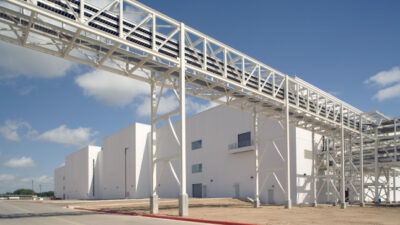Editor's note: Many eyes are on Chicago now that it has adopted one of the nation's first mandatory sprinkler ordinances for non-residential high-rises. Following is a breakdown of the city's initial requirements for other municipalities considering Chicago as a would-be model. On Dec. 15, 2004, the city of Chicago adopted a high-rise fire-safety ordinance estimated to affect approximately 1,30...
On Dec. 15, 2004, the city of Chicago adopted a high-rise fire-safety ordinance estimated to affect approximately 1,300 buildings. Among its provisions is a requirement for all high-rise buildings to be retrofitted with automatic fire-sprinkler systems. Open-air parking facilities, open-air portions of stadiums, non-transient residential buildings and designated landmark or historic buildings are exempt. That being said, all non-transient residential buildings, such as condominiums and apartment buildings, as well as historic buildings, have all been ordered to undergo a life-safety evaluation (LSE) in lieu of sprinklers.
The first major milestone came this past month, when all high-rise owners/managers were required to submit a life-safety data sheet. This one-page form requests general information about the building and its existing fire-protection system. It is anticipated that completed forms will be used to create a database for all high-rises so that the city can track compliance.
To assist building managers in establishing accurate budgets and realistic schedules for sprinkler retrofits, detailed compliance plans should address the following:
-
Adequacy of existing water supply to serve the new sprinkler systems.
-
Proposed locations for new equipment, such as sprinkler-system risers and floor control-valve stations.
-
Sprinkler-system design criteria/materials.
-
Impact of asbestos-containing materials (ACM)on the system installations.
-
Project phasing/schedules.
-
Budgetary construction cost estimates.
-
Options and alternatives.
In addressing sprinkler-system design criteria and materials, it is important that plan preparers be aware that the ordinance permits new sprinkler systems to be designed in accordance with the 2002 edition of NFPA 13, which permits lower design densities for certain occupancies. Unlike previous editions, it also allows existing water supplies to serve both standpipe and sprinkler systems, listed plastic piping and the use of extended-coverage sprinklers. Allowing the sprinkler systems to be designed and installed in accordance with the 2002 edition of NFPA 13, instead of current requirements, will permit systems to be installed more cost-effectively without compromising safety.
The preparer of the compliance plan should also obtain information on the presence of any ACM in the building. The types and locations of ACM can have a significant impact on the cost of the system installation.
As with any construction project, there are always options and alternatives to consider. The compliance-plan preparer should review all available options and alternatives with the building owner/manager for their input. Doing so will ensure that the owner/manager is involved in the design process and should help in developing more accurate project schedules and construction cost estimates.
Compliance Plan Pluses
Building owner involved earlier in design process
Major design issues addressed before construction documents are prepared
Sprinkler-system installations coordinated with planned renovations
Project schedules and construction cost estimates are more accurate



